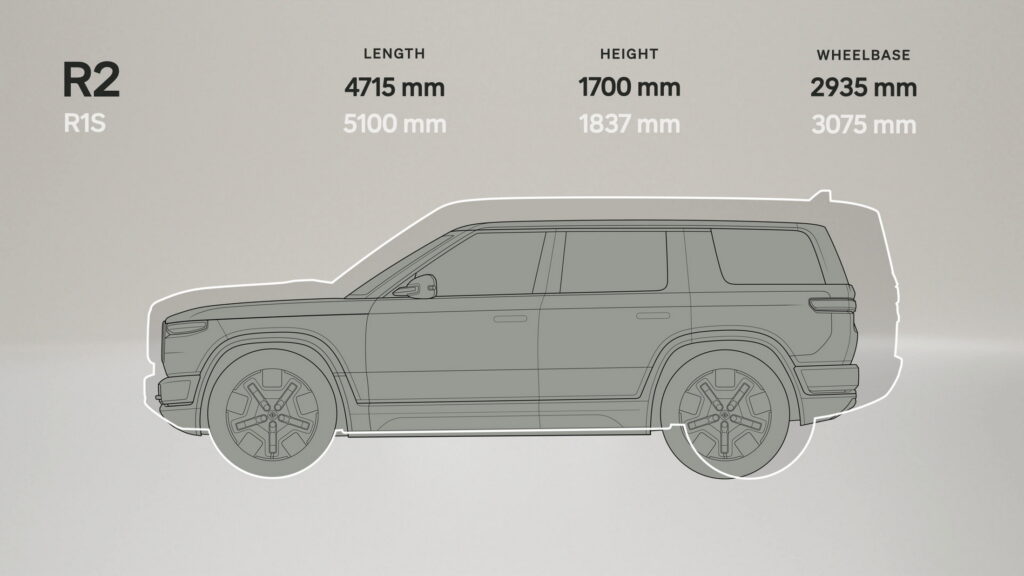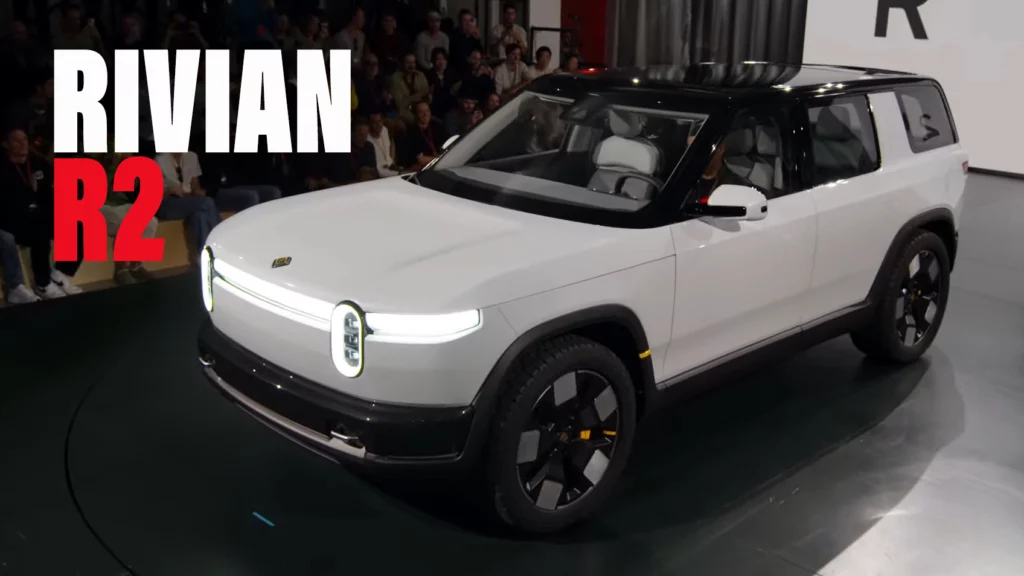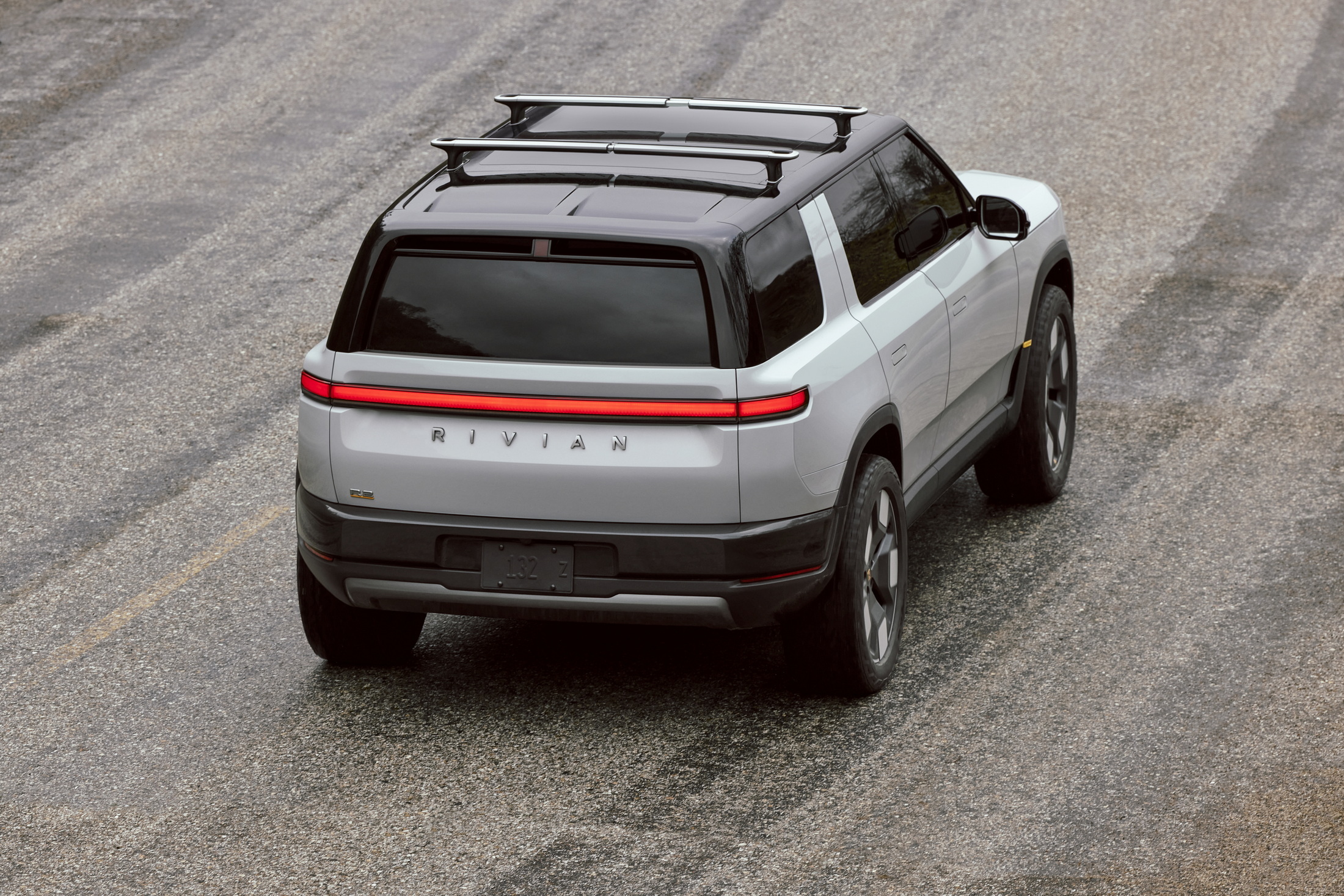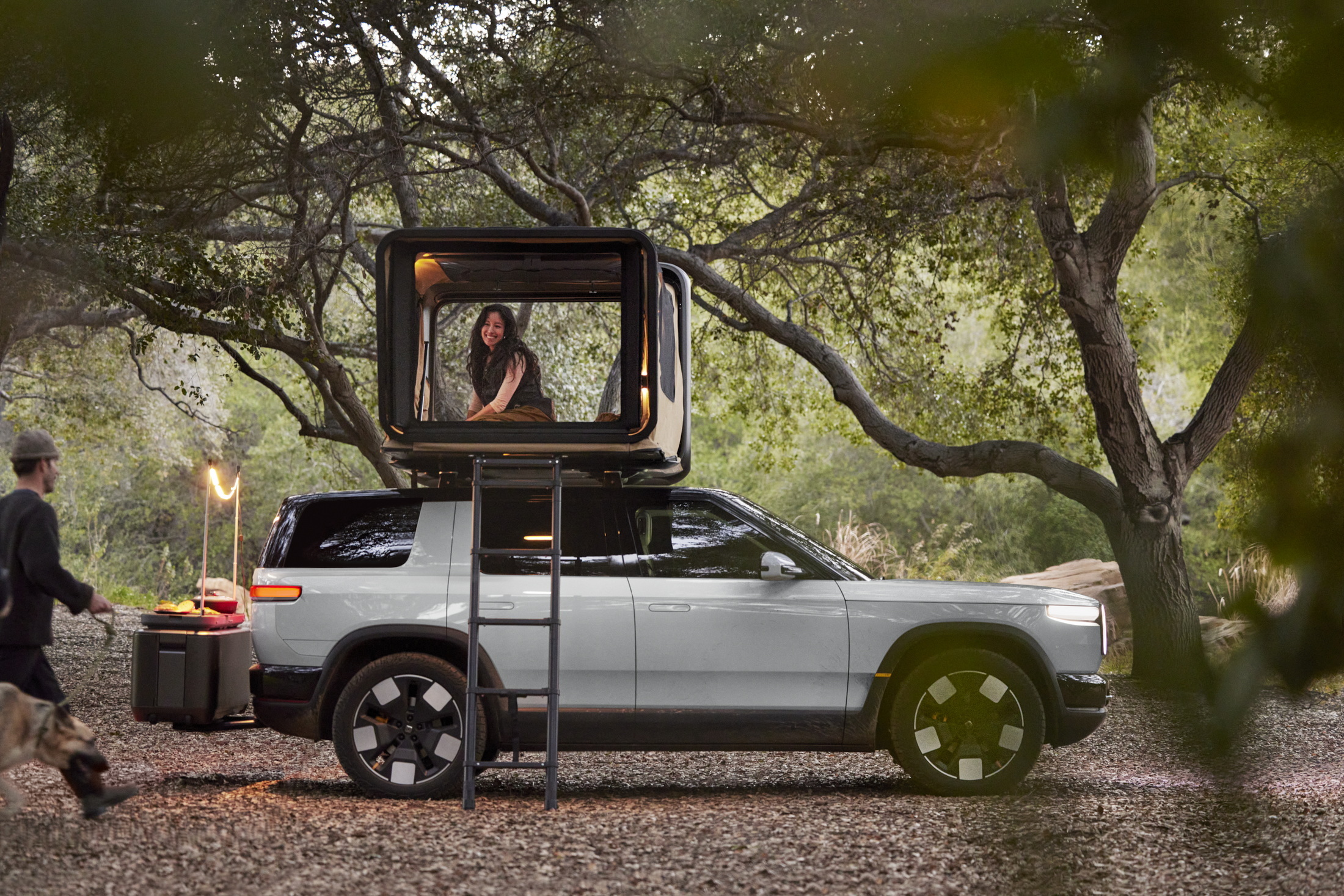It’s been a long time in the making, but Rivian has finally taken the covers off its vitally important R2 crossover. Smaller than the R1S in both scale and cost, the new vehicle promises to play a big part in helping the troubled startup gain sales momentum thanks to a proposed starting price of $45,000.
While that’s about $2,000 more than the Tesla Model Y, it will be much more affordable than Rivian’s current SUV, the R1S, which kicks off at $74,900. It will also be quite a lot smaller, measuring in at 185.6 inches (4,715 mm) in length, which makes it 15.1 inches (385 mm) shorter than its stablemate.
Although it may not sell for less than the Model Y, it will be able to beat it in terms of acceleration. Rivian CEO RJ Scaringe promises that in its highest-performance, three-motor configuration, the R2 will hit 60 mph (97 km/h) in “well under three seconds,” making it faster than the Model Y Performance. At least for now, as Tesla could introduce a faster, improved version of the Model Y by the time the R2 reaches the market.
Read: Rivian Unlocks Tesla Superchargers For R1T And R1S

Efficiency and Charging
In addition to the tri-motor variant, Rivian also plans to offer a two-motor, AWD version of the R2, as well as a single-motor rear-wheel-drive variant. Impressively, regardless of the chosen motor configuration, buyers will be able to travel farther than 300 miles (483 km) per charge. This surpasses the range of the shortest-range Model Y, which can only manage 260 miles (418 km), although the longest-range variant is capable of 310 miles (499 km).
Rivian attributes the impressive range of the R2 to its new battery system, which utilizes 4,695 cylindrical battery cells, larger than those used in the R1. The battery pack is integrated into the vehicle as a structural element, contributing to its overall performance.
Marking a coming change in the industry, the R2 will be equipped with a Tesla-style NACS charger from the very start of production, but Rivian promises that a CCS adapter will also be included with the vehicle. At a DC fast-charging station, the vehicle will be able to go from 10 to 80 percent state of charge in less than 30 minutes.
The R2 is also a step forward in terms of computing power, as Rivian looks to improve on its advanced driver assistance systems. Equipped with 11 cameras and five radar sensors, Scaringe claims that R2 drivers will be able to take their hands off the wheel and their eyes off the road, suggesting that it will be a level 3 autonomous system, like Mercedes’ DrivePilot system.
With their hands back on the wheel, drivers will be able to control several aspects of the vehicle with thumb scrollers. These have dynamic haptic feedback, which allows the automaker to make them click or spin differently depending on what the driver is trying to achieve.
Rivian has not disclosed the exact size of the screens in the R2, but there is a compact, wide display behind the wheel for the instruments, along with a larger touchscreen on the dashboard positioned between the front seats. Scaringe mentioned that the company took feedback from R1 customers into account, particularly regarding the desire for a glove box, and has now incorporated two glove boxes into the design of the R2.
Further back, Rivian has focused on creating an open and spacious cabin environment. This is facilitated by a panoramic sunroof, along with rear quarter windows that fold open and a rear windshield that can be rolled down into the tailgate. These design elements not only enhance airflow within the cabin but also provide practical benefits, allowing owners to transport longer items such as surfboards inside the vehicle.
Additionally aiding owners in transporting long items are the fold-flat second-row and first-row seats. Reflecting Rivian’s approach, Scaringe noted that the fully flat surface simplifies in-vehicle camping. Moreover, the CEO hinted at upcoming accessories such as a roof-mounted tent and a camping kitchen package that can be plugged into the R2’s rear sockets. Naturally, a front trunk capable of accommodating multiple bags will complement the vehicle’s storage capabilities.
Scaringe said that order books open today for the R2. The company is looking to start delivering the R2 to customers in the first half of 2026, and it will produce the vehicle at its plant in Normal, Illinois.
As for whether Rivian can actually stick to their ambitious $45,000 starting price for the R2, well, let’s just say we’ve witnessed our fair share of EV startups making big promises during presentations only to disappoint later on. So, we’ll have to wait and see.





















































































